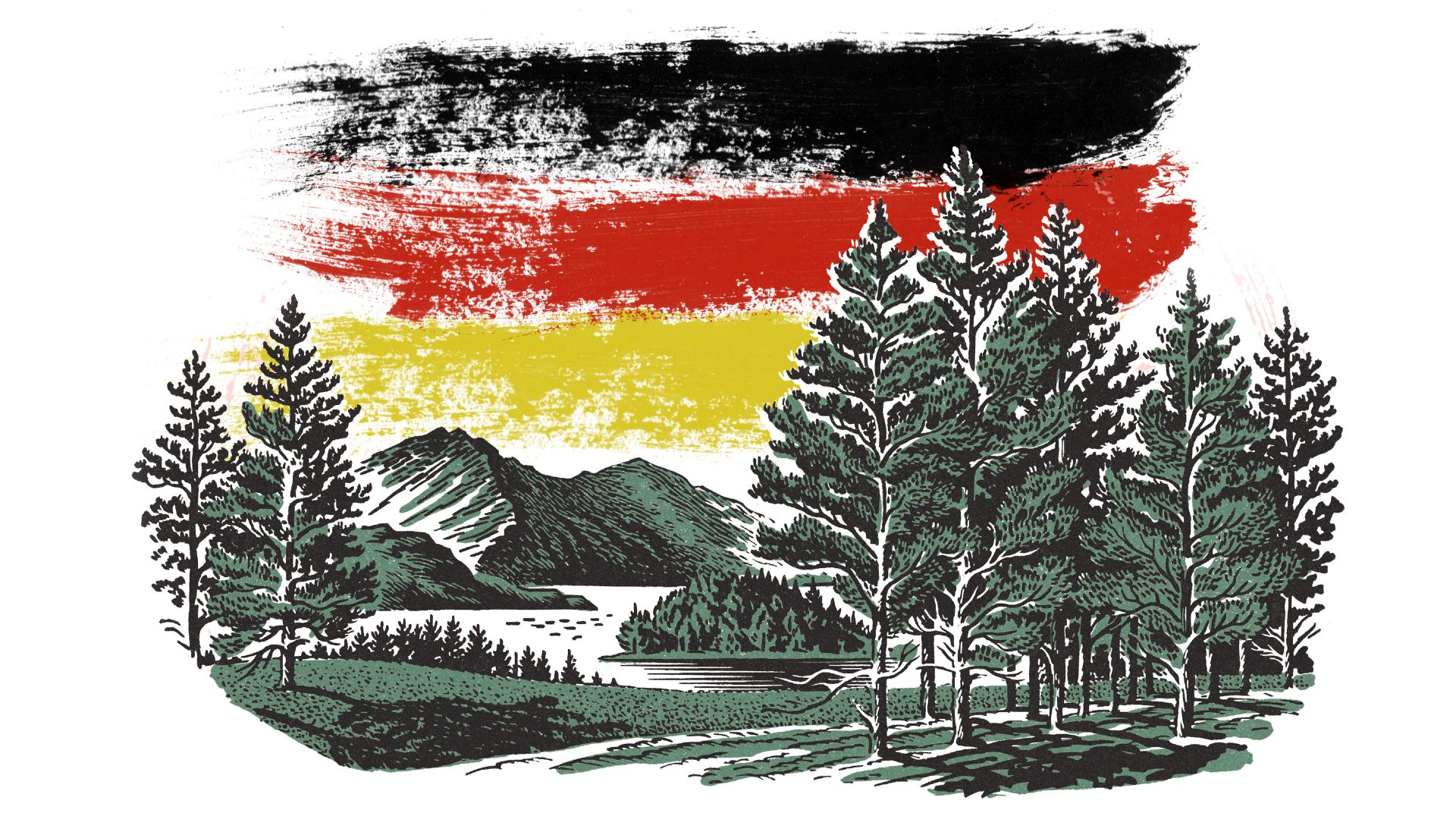There are few things Germans have a closer bond to than the woods.
The cultural roots of the Deutscher Wald go back longer than beer and sausage. They are so strong that the book The Hidden Life of Trees: What They Feel, How They Communicate remained in bestseller lists for two years.
Alarmingly though, these roots – literally – don’t go deep enough to survive climate change.
When I was a kid, in the 1980s, the term Waldsterben (forest death) was created. We saw pictures of tree skeletons and a cover of Der Spiegel shouted: “Our forest dies!”, but in the 1990s, whoosh, the fear was gone. The forest lived. And anyone still warning was ridiculed as a gloomster.
For a few years now, the tree skeletons are back, in ever larger numbers.
I recently ran into one of Germany’s most renowned forestry scientists, Jürgen Huss, a former professor at Freiburg University with experience in Ireland, too. We were on a train going through hilly green forests, specked with huge brown or bald patches.
“In the 1980s, the extensive damage to forests was partly due to acid rain,” he explained. “Power stations burned cheap coal and emitted sulphur oxide.” Once they were forced to use proper filters, the acid rain stopped and the woods recovered.
Today, it’s not acid but aridity that kills the trees’ immune system. They then fall prey to the bark beetle.
Spruces have suffered most. Which is bad news. Because over the centuries we turned from beech territory, with a mix of fir trees, oak and ash, to spruce land. Easy-to-grow spruces (and pines) now have an above 50% share in Germany.
Having adapted to permafrost during the Ice Age, the spruce’s root system is shallow – a death sentence in dry periods. Even the pine, graded drought tolerant, is afflicted more than expected. Beech trees show damage as well. “We now have conditions similar to Italy, so no wonder they are flagging,” says Huss.
Germany’s climate is generally tree-friendly, but there have always been temporary challenges, so-called rare events. Huss: “Our weather is commanded by the Atlantic Ocean, but every 20-50 years a continental high-pressure area drops in from Russia and leads to long heat periods.”
He adds that if the high comes in winter, there are equally long frosts.
“Climate change deniers overlook that the ‘rare’ events – at least the heatwaves – are heaping up. The CO2 levels have risen so that we will face ever more and ever longer droughts. The years 2018 to 2020 and 2022 are a foretaste.”
Paradoxically though, forest land is growing. Compared to mid-19th century Europe we are doing significantly better.
Wood used to be the only source of energy, and needed for factories, castles and ships, barrels, war equipment and mining. The pressure eased when the railway could transport coal to remote areas. Reforestation started, but mostly with the unpretentious spruce and pine instead of beech and oak.
The pro-conifer trend gained further traction after the second world war, when French and British troops cut down a lot of trees to bring back home as reparation. “The population suffered from ‘German angst’ – lack of wood, severe erosion damage – and thus afforested the bald spots with conifers. These are often the areas we now see damaged by drought,” says Huss.
Fast-growing conifers have brought German forest from 29% in 1970 to 32% in 2020. This shift, says Huss, is due to (young) farmers unwilling to cultivate crops on steep land anymore. “In the plains, though, you have to fight tooth and nail to defend every square metre of wood – against growing cities, traffic infrastructure and farming.” But on balance, there still is a net growth.
What is to be done to keep it up? “If I could make a clear bid on that, I would get the Nobel prize,” Huss smiles. “I have never seen my guild as insecure as today. All possible species are discussed as fill-ins: cedar, Turkish hazel, Douglas fir, Bornmuller’s fir, silver lime. But we don’t know how soon it will get even hotter and drier, how often and selectively it will rain, if we can still expect deep winter frost and whether Mediterranean species could then cope.”
Even with subsidies, “it will be close to impossible to supply plants in the quantities needed for reforestation or forest conversion. Plus, we don’t have the necessary labour force.”
Unlike in the UK, around half of our forests are small sized and privately owned. Huss: “Many owners have now lost their forest, which was a savings account of sorts for them. Most haven’t the means to shoulder reforestation and protection against game animals.”
There is hope, however, if only symbolically: “Oak trees have put up the best fight so far,” says Huss. Which is balm for the German soul: the Deutsche Eiche is to us what the shamrock is to the Irish. Germanic mythology and national romanticism is full of oak cult, the oak symbolising faithfulness, steadfastness and – immortality!




